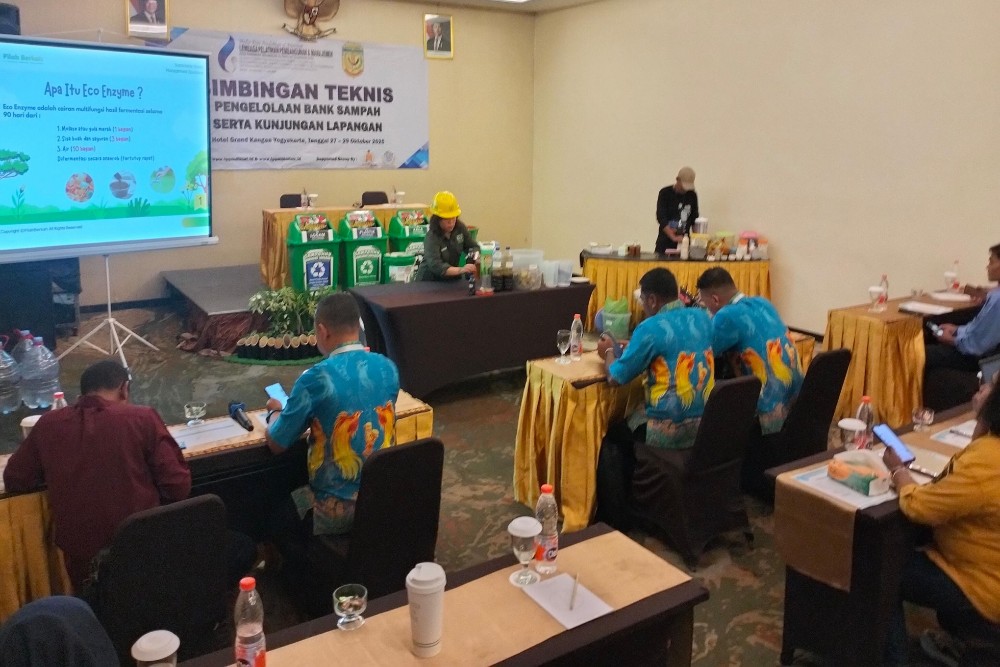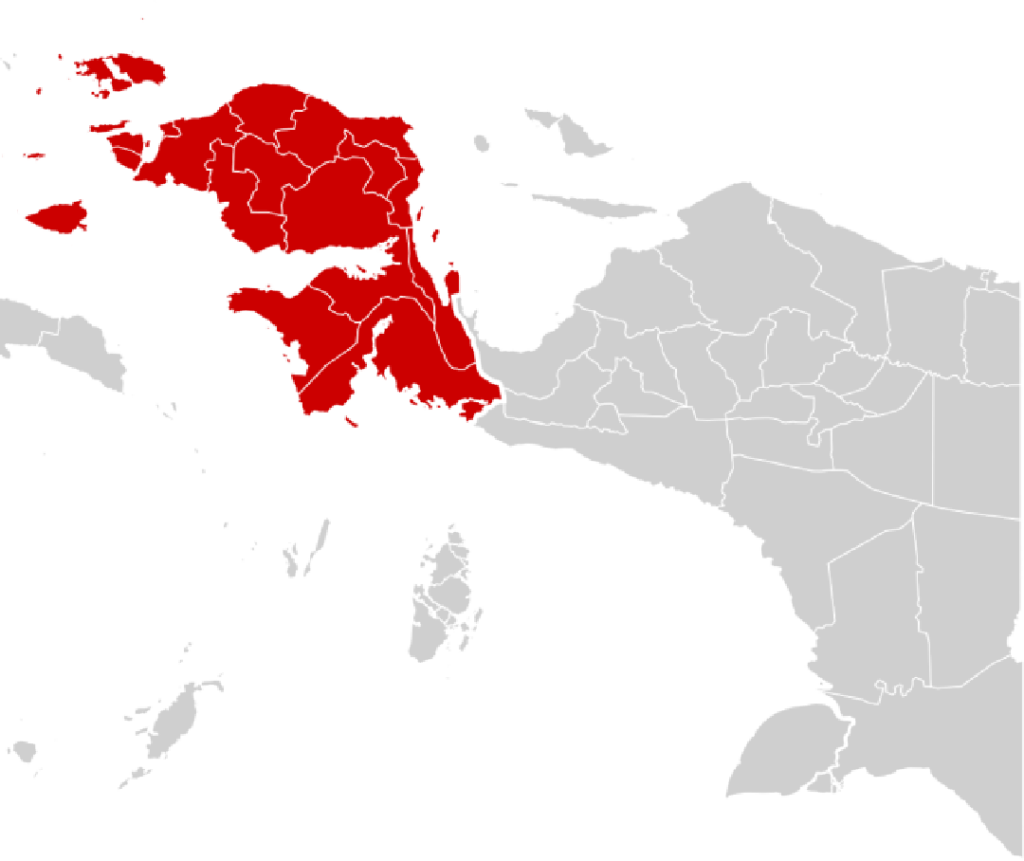In the far reaches of Indonesia’s Papua region, the sound of progress is no longer only heard from mining trucks or construction machinery. In Mimika Regency, it comes from something far more ordinary: the clinking of plastic bottles, the rustle of cardboard, and the steady rhythm of community workers collecting waste. What was once an environmental burden is now being reborn as an economic resource. Through the “Bank Sampah Mimika” (Mimika Waste Bank) program, the local government is reimagining the relationship between people and their trash—and proving that even in one of Indonesia’s most remote regions, circular economy ideas can take root and flourish.
A City Drowning in Waste
Like many developing regions, Mimika has long struggled with waste management. The district capital, Timika, generates an estimated 100 tons of waste every single day. Piles of plastic bottles, food leftovers, cardboard boxes, and aluminum cans once filled drains and empty lots, creating health hazards and an eyesore for residents. Without proper systems of waste segregation or recycling, the majority of this waste would end up in open dumps or landfills such as the TPA Iwaka site, placing additional strain on the local environment.
For the local government, this was not only an environmental issue—it was a social and economic one. Waste symbolized inefficiency, poverty, and neglect. But over the past two years, Mimika’s leaders have taken a bold step forward, determined to convert what was once worthless into something valuable. The question was not how to get rid of the waste, but how to make the waste work for the people.
The Birth of Bank Sampah Mimika
On October 3, 2025, the Mimika Regency Government, through the Department of Environment (Dinas Lingkungan Hidup or DLH), officially launched the Bank Sampah Mimika—a program that literally treats waste like money. Under this system, residents are encouraged to separate their trash into two basic types: organic (like food scraps and garden waste) and inorganic (such as plastic bottles, paper, and cans). The organic waste is composted or turned into fertilizer, while the inorganic waste is collected, weighed, and then sold to recycling partners.
The beauty of the system lies in its simplicity. Every kilogram of recyclable waste has a price, and the value is recorded like a savings account. For example, plastic bottles might be worth Rp 1,000 per kilogram. Multiply that by 100 tons of daily waste, and suddenly the city’s garbage represents a potential value of up to Rp 100 million per day. What was once a problem now becomes a circulating local economy.
But the waste bank is more than a buy-and-sell operation. It is a community movement. Every neighborhood is encouraged to build its own “waste kiosk”—a drop-off point where residents can deposit sorted waste. In return, they receive cash or even basic goods like rice, sugar, or instant noodles. The aim is not only to clean the environment but also to foster a habit of recycling that benefits everyone.
Learning from Yogyakarta: Building Skills and Systems
The success of Mimika’s waste bank program did not come overnight. Recognizing the need for expertise, the local government sent 16 staff members from the Environmental Office to Yogyakarta on October 27-29, 2025 to study the best practices of waste management. They visited community waste banks in Bantul and Sleman, where local residents have long been involved in sorting and processing their garbage. From these study visits, Mimika officials learned how to organize neighborhood-level waste sorting, manage logistics, and even use waste data to plan policies.
The collaboration between Mimika and Yogyakarta marked a turning point. The Papuan regency realized that technical skills and strong local leadership were key. Upon returning home, the DLH officers adapted these lessons to Mimika’s unique context—with its diverse ethnic communities, vast geography, and logistical challenges. They began training local waste collectors, launching educational campaigns, and providing incentives for villages to participate.
Empowering Communities Through Participation
At the heart of the initiative is community empowerment. In the pilot area of Mimika Baru, the government recruited 22 waste-sorting officers—two for each urban village—under six-month contracts. These workers, paid according to the regional minimum wage and insured under BPJS, visit households to teach residents how to separate waste properly. Their work is as much about education as it is about collection.
The local government also signed partnerships with several stakeholders, including Bank BNI, to facilitate cashless transactions for waste savings. Residents can now deposit their waste and see their earnings recorded in a formal account—reinforcing the concept that trash truly has economic value. For many lower-income families, this provides both financial relief and a sense of pride in contributing to environmental protection.
Moreover, the program has created informal jobs for waste pickers, recyclers, and local small businesses that buy and process used materials. Plastic bottles are baled and sold to factories in Java, while cardboard and aluminum cans are repurposed for industrial use. It is an ecosystem that links citizens, government, and private enterprise—all built on the foundation of discarded materials.
Government Commitment and Institutional Support
To ensure sustainability, the Mimika government has allocated an additional Rp 20 billion in its 2025 revised budget to strengthen the waste management system. This funding covers the construction of waste kiosks in 21 sub-districts, the purchase of transport vehicles, and the development of waste collection infrastructure. The funds also support training programs for local waste bank operators and environmental educators who will continue to spread awareness.
Complementing the financial investment, a new regional regulation—Peraturan Bupati (Perbup) No. 37/2025—was issued to limit single-use plastic consumption in government offices, schools, and business establishments. The goal is to reduce the volume of non-recyclable waste entering the system while also promoting reusable and biodegradable alternatives.
By linking policy with grassroots action, Mimika is building a foundation for a more sustainable waste economy. The message is clear: every citizen has a role to play in protecting the environment—and can benefit economically from doing so.
From Waste to Livelihood: The Economic Ripple Effect
The economic potential of the waste bank model is already visible. In some communities, residents report earning between Rp 50,000 and Rp 200,000 per week from selling sorted waste. For many households, especially those in informal settlements, this additional income can cover basic necessities like food, school supplies, or fuel.
Waste collectors and sorting officers also enjoy stable employment. Local entrepreneurs are now establishing micro-enterprises that process used plastics into crafts, furniture, or construction materials. Small industries have begun to emerge around the recycling ecosystem—proof that the circular economy can thrive even in Papua’s challenging context.
If the projected Rp 100 million daily waste value becomes reality, it could generate billions of rupiah in local circulation each year. More importantly, it shifts public perception: waste is no longer a sign of poverty but a sign of potential.
Challenges Along the Way
Despite impressive progress, Mimika’s waste revolution faces real challenges. Behavioral change remains the hardest obstacle. Many residents still find it inconvenient to sort waste or are unaware of its economic value. Public education campaigns, therefore, must continue consistently and creatively—using schools, churches, and community leaders to spread awareness.
Logistics pose another hurdle. Transporting waste across Mimika’s vast and often rugged terrain is costly. Some villages remain far from collection points, and fuel expenses can eat into the program’s profits. The government is exploring partnerships with private companies to improve efficiency and develop local recycling facilities, reducing the need to ship waste to Java.
Finally, maintaining transparency and accountability in the waste bank system is essential. Data on collection volumes, payments, and recycling rates must be tracked accurately to ensure trust and long-term success.
A Model for Papua and Beyond
Mimika’s waste bank initiative is more than a local project—it is a model of resilience and innovation for other regions across Papua and Indonesia. It shows that sustainable development does not always require high-tech solutions or massive capital; sometimes it starts with the simple act of seeing value where others see trash.
Other districts in Papua Tengah are already showing interest in replicating the Mimika model. The combination of community participation, strong local policy, and real economic incentives could transform how Papuan towns manage their waste in the future.
If successfully scaled, Mimika’s approach could contribute to Indonesia’s broader target of reducing ocean plastic waste by 70% by 2025 and achieving zero waste to landfill by 2040. For a region often portrayed as remote and underdeveloped, Mimika is showing that it can lead—not lag—in sustainability innovation.
Conclusion
In Mimika, every plastic bottle and piece of cardboard tells a new story—one of hope, empowerment, and environmental renewal. The Waste Bank program has turned rubbish into revenue and citizens into stewards of sustainability. It is a story of how a community once buried under garbage is now digging its way out, one recycled item at a time.
The road ahead is long, but the vision is clear. Through education, participation, and innovation, Mimika is redefining what progress looks like in Papua. It is no longer just about building roads or mining resources—it is about building a future where the economy and environment thrive together.
In the end, Mimika’s transformation proves a simple truth: when people see value in what they once threw away, both the planet and the people begin to heal.


